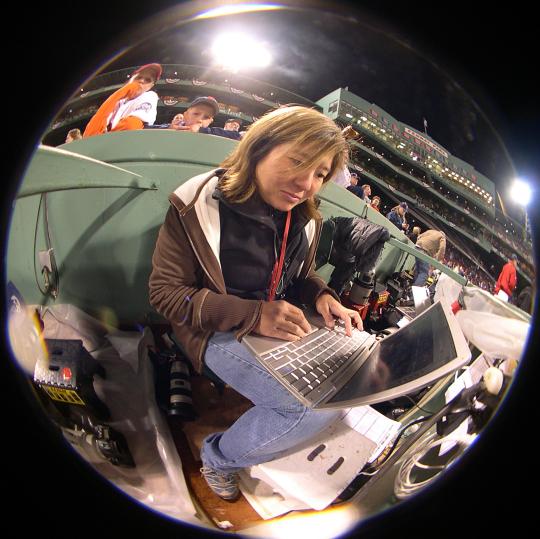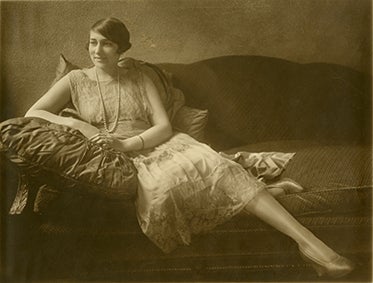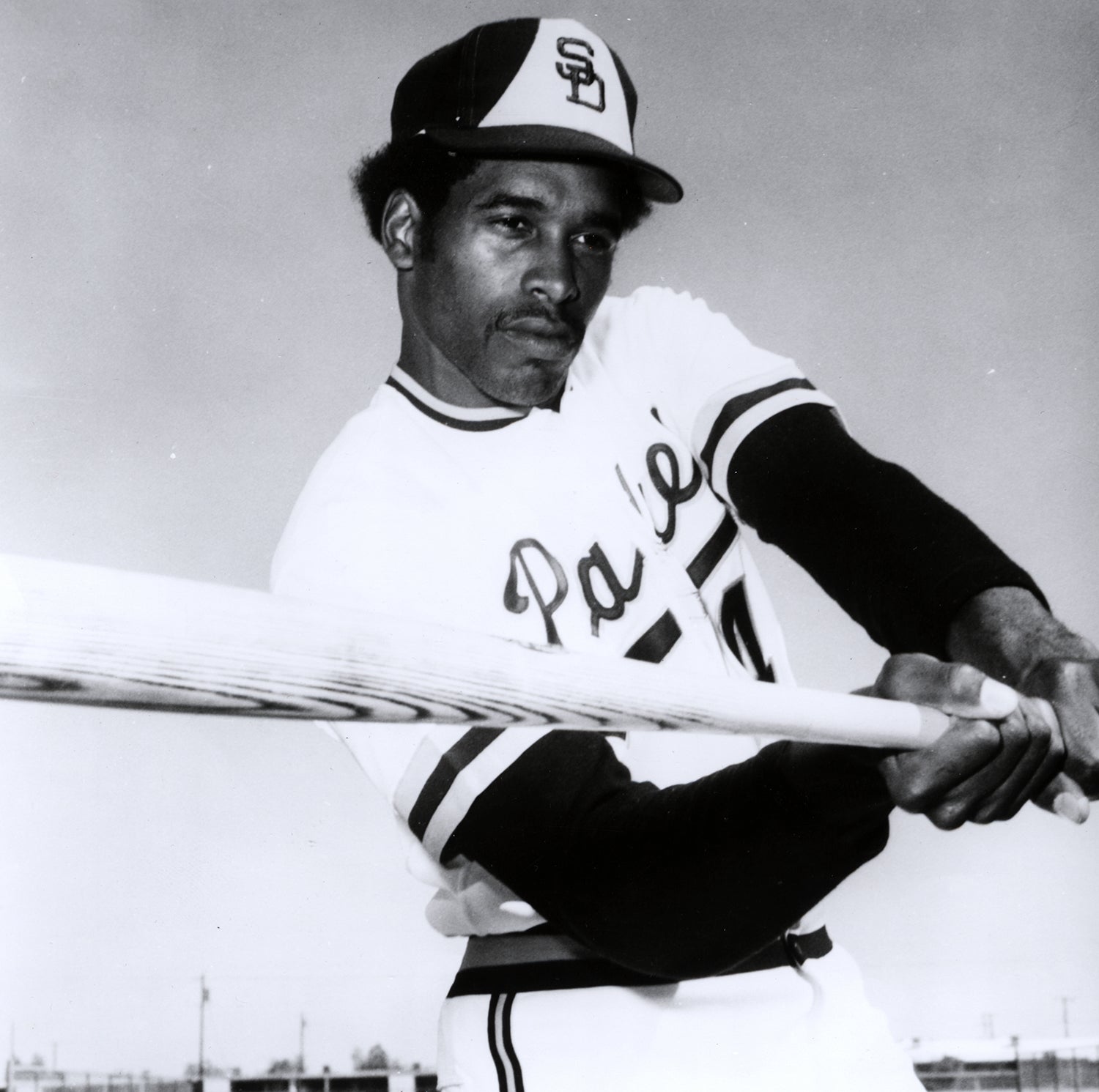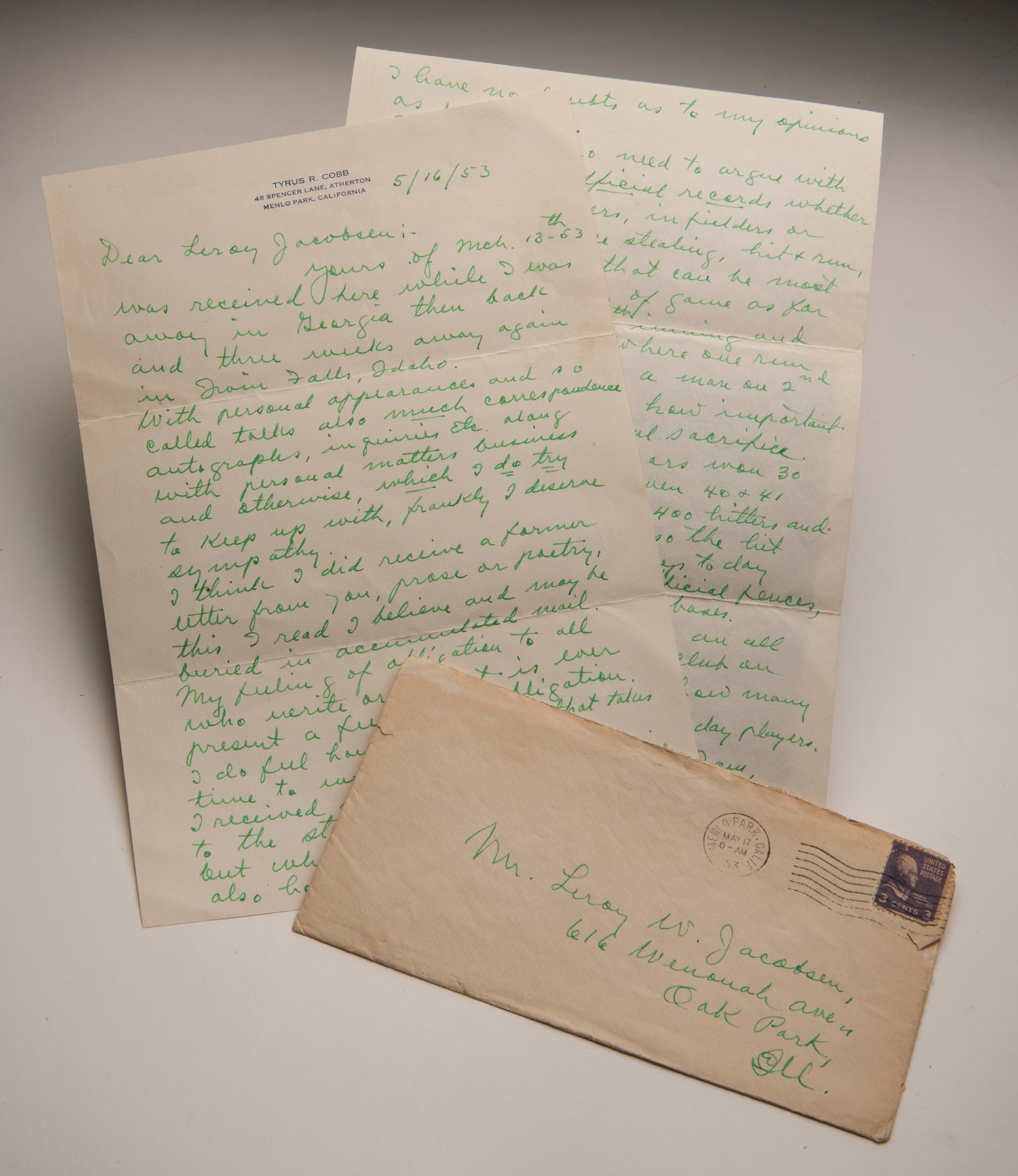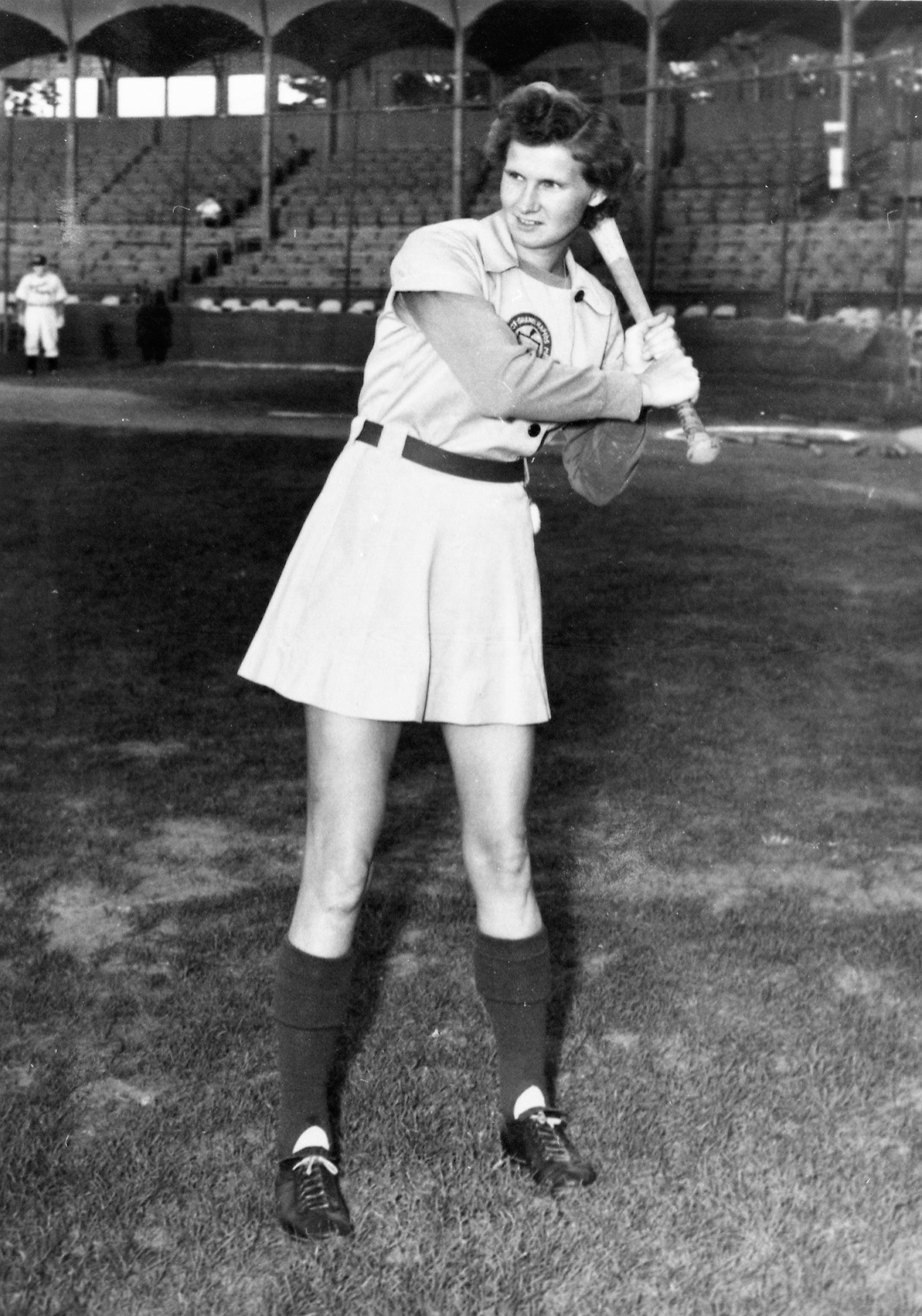- Home
- Our Stories
- #Shortstops: Brita Meng Outzen helped change the game behind the lens
#Shortstops: Brita Meng Outzen helped change the game behind the lens
In celebration of Women’s History Month, the Hall of Fame presents a series of stories about legendary and pioneering women in baseball.
From the photographers’ box or “pit” at Fenway Park, Brita Meng Outzen watches Major League Baseball players through her camera lens, capturing the action in the Boston Red Sox home games every season. She engages in a profession that was “once as about as welcoming to gender diversity as trucking.”
She has claimed a place, along with a steadily increasing number of women, among the top sports photographers in baseball. A self-described “sports geek,” Outzen combines her knowledge of baseball, a keen eye and a penchant for good storytelling to create outstanding action photographs.
Outzen is a self-taught photographer who took an unusual path to the pit at Fenway. Trained as an electrical engineer, she entered the high-pressure world of the high tech industry during the dot com boom. When the boom started to bust in the late 1990s, Outzen seized an opportunity to become the webmaster for the Boston Red Sox, one of the first professional baseball teams to launch a website.
Hall of Fame Membership
There is no simpler, and more essential, way to demonstrate your support than to sign on as a Museum Member.
For the website, she needed content. She needed words and she needed pictures. At a time when color slides were the preferred medium for professional sports shooters, Outzen needed visual content with an instantaneous turnaround time. She began taking pictures, experimenting with some of the earliest consumer digital cameras. Outzen was perfectly positioned when professional sports photographers gave up their film, and turned almost exclusively to digital photography in the first years of the new millennium.
What makes a good action photograph? According to Outzen, it has to be in focus. To capture the action a photographer has to understand the “ebb and flow” of a baseball game. She knows “where to point the camera” and “where the play is going to be,” because she knows her players and she knows the game. She anticipates and follows the game, and – with a little luck – her camera is pointing in the right direction to capture the big play.
One of the best things about Outzen’s job is that she “gets to see some awesome baseball.” She has earned hundreds of photo credits, two World Series rings, and has witnessed some of baseball’s “great plays” during more than a decade in the pit. She has photographed in all sorts of weather, lugged 40 pounds of equipment to every location, endured a 15-inning game without a bathroom break, and survived floods in the pit and sprays of champagne. She loves her job.
Outzen was a pioneer and her legacy is apparent on the field. One day she looked around the photographers’ box at City of Palms Park – the Red Sox’s Spring Training home – and noted something remarkable: Every photographer in the pit was a woman.
Jenny Ambrose is the former photo archivist for the National Baseball Hall of Fame and Museum


